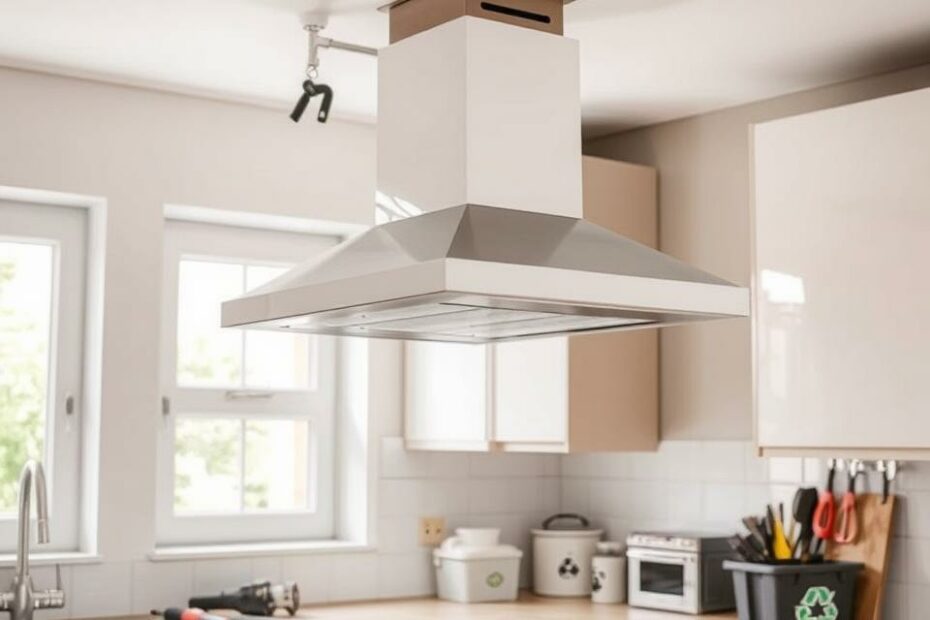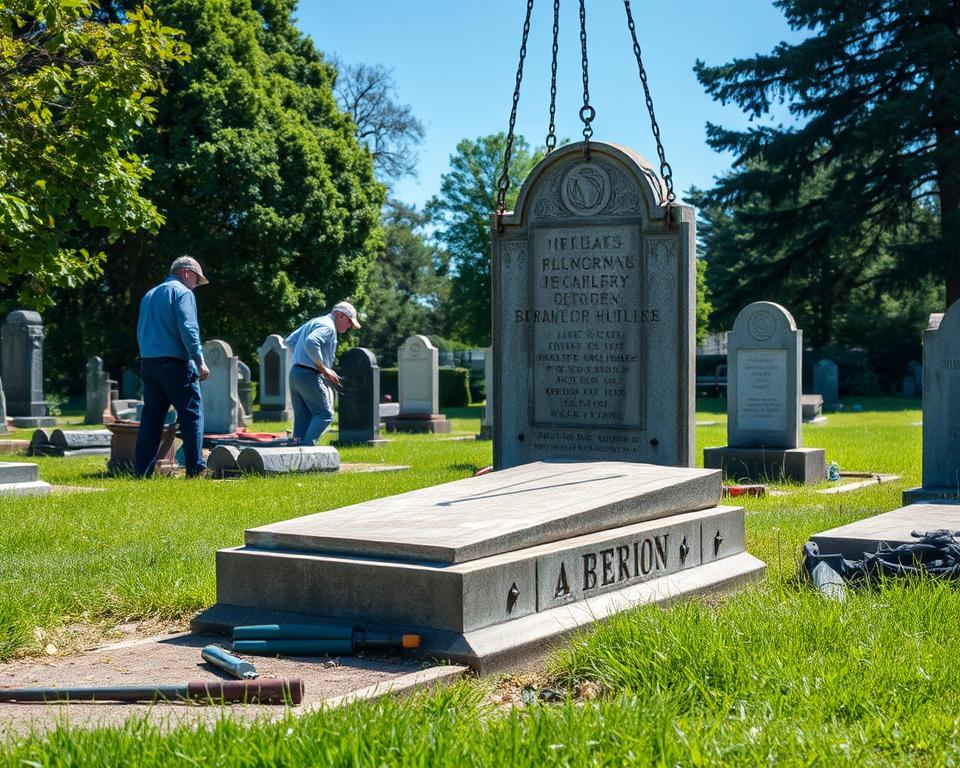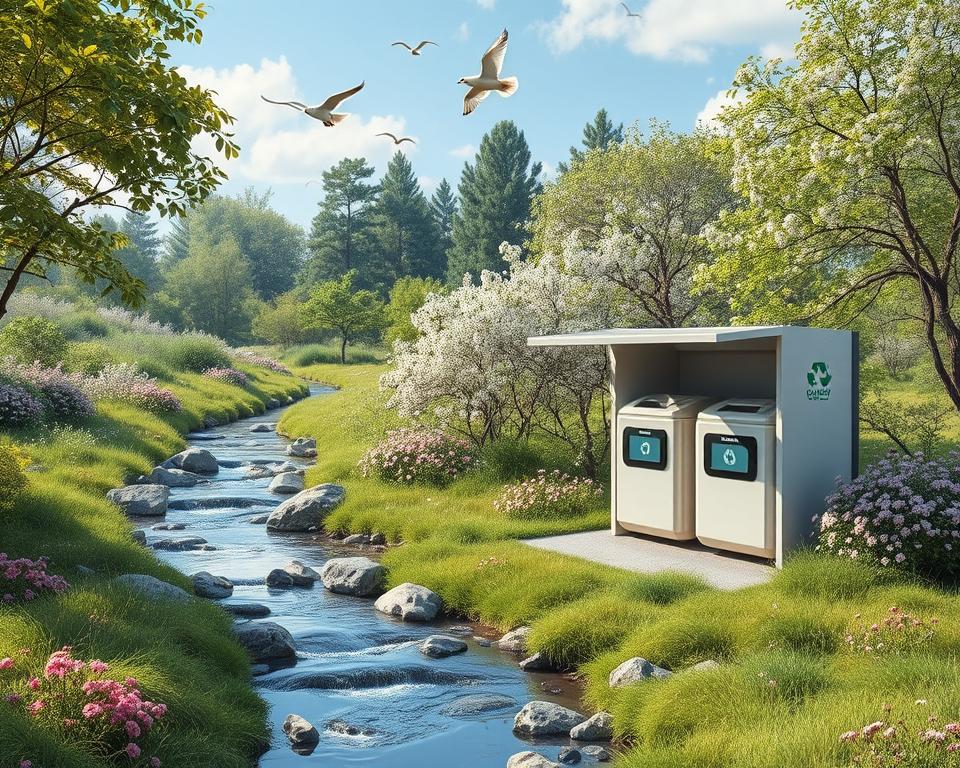Standing in my kitchen, I looked at the old extractor hood. It reminded me of all the meals and laughter we shared. It was time to let it go and move towards a greener future.
Deciding to replace or get rid of your extractor hood can be tough. But, with the right help, you can do it in a way that’s good for the planet.
This guide will show you how to dispose of your extractor hood the right way. We’ll talk about the environmental effects, safety, and how to leave a smaller footprint. Whether you’re getting a new, energy-saving model or just saying goodbye, we’ve got you covered.
Understanding the Importance of Proper Extractor Hood Disposal
Getting rid of your kitchen exhaust fan or cooker hood the right way is key for the planet and your safety. If you don’t dispose of these items correctly, it can harm the environment. It can also be dangerous if not done carefully. Let’s look at why it’s important to dispose of extractor hoods responsibly.
Environmental Impact of Improper Disposal
Kitchen ventilation systems, like extractor fans and cooker hoods, have parts that can hurt the environment if not thrown away right. They might have heavy metals, plastics, and refrigerants that can pollute soil, air, and water. If these items go to landfills or are not disposed of properly, it can harm ecosystems and human health.
Safety Considerations for Handling Extractor Hoods
Extractor hoods and kitchen ventilation gear can be heavy and hard to move, which can be dangerous. If you don’t handle them right, you could get hurt. It’s important to safely take apart and get rid of your cooker hood, exhaust system, or kitchen ventilation equipment to protect the environment and people involved.
| Potential Environmental Impacts | Safety Risks |
|---|---|
|
|
Knowing the environmental and safety risks of not properly kitchen ventilation demolition or extractor fan recycling helps you make better choices. This way, you can ensure your appliance is disposed of responsibly and help make the future greener.
Preparing Your Extractor Hood for Disposal
Before you can get rid of your range hood, vent hood, or cook top ventilation system, you need to prepare it. This guide will help you disassemble and safely handle your extractor hood. This makes the cooking fume evacuation disassembly easier.
Disconnecting the Extractor Hood
The first thing to do is disconnect the extractor hood from the power source. Unplug the electrical cord or switch off the circuit breaker. Then, find and remove any screws or fasteners holding the hood to the wall or cabinetry.
After that, lift the hood and set it on a stable surface. Make sure it’s secure while you dismantle it.
Dismantling the Extractor Hood
When disassembling the extractor hood, be careful. It has many parts. Always follow the manufacturer’s instructions for removing filters, lights, and ductwork.
- First, take out any removable filters or grease traps inside the hood.
- Then, disconnect the ductwork or venting system at the back or top of the hood.
- Next, unscrew or detach any light fixtures or electrical parts.
- Finally, safely remove the hood’s outer shell or casing, remembering the disassembly order.
By following these steps, you’ll get the extractor hood ready for disposal. This ensures a safe and efficient removal of the appliance.
Identifying Recyclable Components of Your Extractor Hood
When it’s time to get rid of your old extractor fan or cooker hood, knowing what can be recycled is key. Recycling extractor fans and exhaust systems helps reduce waste and supports the environment.
Separating Metal Parts for Recycling
Extractor hoods have metal parts like the outer casing, fan blades, and brackets. These can usually be recycled at local scrap metal programs or appliance recycling centers. By separating these metals, they can be turned into new products.
Disposing of Non-Recyclable Materials
Not all parts of your extractor hood can be recycled. Items like plastic filters, electrical wiring, or insulation need to be thrown away according to local rules. This might mean putting them in different bins or taking them to a hazardous waste center.
By sorting out what can and can’t be recycled, you help the environment. This makes your cooker hood’s removal and disposal more eco-friendly.
Local Regulations and Guidelines for Extractor Hood Disposal
It’s important to know the local rules for getting rid of your kitchen extractor hood. These laws help protect the environment and keep people safe. They make sure extractor hoods are disposed of correctly.
The rules for disposing extractor hood, kitchen ventilation demolition, and cooking fume evacuation disassembly differ by area. Here are some key things to remember:
- Reach out to your local waste management or recycling office. They can tell you how to dispose of extractor hoods in your area.
- Find out if there are special places for recycling appliances and electronics. Extractor hoods have materials that need careful handling.
- Know the dangers of getting rid of extractor hoods. They might have electrical parts or harmful materials. Always follow safety steps.
- Learn about any costs for getting rid of your extractor hood. Some places might charge a fee to cover recycling costs.
Following local rules for extractor hood disposal helps the environment. It makes kitchen ventilation system upkeep more eco-friendly.
| Local Regulation | Disposal Requirement | Potential Fees |
|---|---|---|
| City A | Appliance Recycling Center | $20 per unit |
| County B | Scheduled Curbside Pickup | No Fees |
| State C | Hazardous Waste Facility | $35 per unit |
Dispose Extractor Hood: Step-by-Step Guide
Getting rid of your extractor hood is important for the environment and safety. Whether it’s time for a new vent hood or you’re taking out an old one, this guide will make it easy.
Disconnecting and Removing the Extractor Hood
The first thing to do is disconnect the hood from power and any ducts. Unplug the electrical parts and remove screws holding it in place. After that, you can safely take the extractor hood out.
Transporting the Extractor Hood Safely
Once you’ve removed the hood, it’s key to move it safely to where it needs to go. Wrap it in cardboard or bubble wrap to avoid damage. If it’s big or heavy, get someone to help you carry it.
When you’re getting rid of your range hood, vent hood, or cook top ventilation, follow the right steps. This helps the environment and keeps everyone safe.
Recycling Centers and Facilities for Extractor Hoods
Disposing of your extractor hood or kitchen exhaust fan responsibly is key. Finding the right recycling options can seem tough. But don’t worry, we’ve got you covered. Learn about recycling centers and facilities that handle these appliances, giving your old extractor fan a second chance.
Finding Eco-Friendly Disposal Options
Recycling your extractor hood or kitchen exhaust fan is good for the planet. It also keeps valuable materials out of landfills. Here’s how to start:
- Contact your local recycling program to learn about extractor fan recycling rules.
- Look for recycling centers in your area that focus on appliances and electronics. They might have services for extractor hoods and exhaust systems.
- Visit scrap metal yards and metal recyclers. See if they accept extractor hoods and can recycle them properly.
Preparing Your Extractor Hood for Recycling
Before recycling your extractor hood, prepare it first. This means:
- Remove the electrical wiring and take out hazardous parts like grease filters or lighting.
- Break down the extractor hood into its parts, like metal, plastic, and other materials.
- Clean the extractor hood well to remove grease or debris. This helps with recycling.
By doing these steps, you’ll make your old extractor hood recyclable. This helps the environment for the future.
| Recycling Center | Location | Extractor Hood Recycling Services |
|---|---|---|
| ABC Recycling | 123 Main St, Anytown, USA | Accepts all types of extractor hoods and kitchen exhaust fans for proper recycling and decommissioning. |
| XYZ Electronics Recycling | 456 Oak Rd, Somewhere, USA | Specializes in appliance and electronics recycling, including extractor hoods and exhaust system decommissioning. |
| Eco Appliance Recyclers | 789 Maple Blvd, Elsewhere, USA | Offers comprehensive recycling services for a wide range of kitchen appliances, including extractor hoods and exhaust fans. |
Alternatives to Disposal: Repurposing or Donating Your Extractor Hood
When you take out your old cooker hood, think about not throwing it away. You can give it a new life by repurposing or donating it. This helps the environment and keeps your kitchen running smoothly.
Repurposing Your Extractor Hood
Got a working kitchen ventilation demolition hood? You can give it a new role. A bit of creativity can turn it into something special for your home.
- Make it a stylish wall-mounted planter or a rustic-chic shelving unit.
- Change it into a striking light fixture, adding industrial charm to your space.
- Break it down and use parts to make unique furniture or art.
Donating Your Extractor Hood
Can’t repurpose it? Donate your cooker hood uninstallation to a local charity. It’s good for the planet and helps those who need kitchen appliances.
- Look for local thrift stores, secondhand shops, or charities that take kitchen appliances.
- Make sure the hood works before you donate it.
- Call the charity to see how to donate and when they can pick it up.
Choosing not to throw away your kitchen ventilation demolition can make a big difference. With a bit of imagination, your old hood can have a new life and help others.
Hiring Professional Extractor Hood Removal Services
Need to get rid of your extractor hood? Hiring pros for the job can be a smart move. They’ll take care of everything, from cooking fume evacuation disassembly to the right disposal of the extractor hood. This makes the whole process easy and stress-free.
Advantages of Professional Services
Here’s why you should choose professionals:
- They remove the extractor hood safely and efficiently, avoiding damage or injury.
- They dispose of it properly, following local laws and protecting the environment.
- They know how to handle the tricky parts, like disconnecting electrical and ductwork.
- It saves you time, as they do the job faster than you could on your own.
Finding Reliable Service Providers
Looking for extractor hood removal services? Keep these tips in mind:
- Choose companies with experience in cooking fume evacuation disassembly and disposal.
- Make sure they’re licensed and certified to do the job.
- Check out what others say online to see if they’re good at their job.
- Get quotes from different places and compare to find the best deal.
Working with trusted professionals means a smooth and eco-friendly extractor hood disposal process. It’s less hassle for you and better for the planet.
Best Practices for Maintaining and Replacing Extractor Hoods
Keeping your kitchen exhaust fan in good shape and knowing when to replace your vent hood is key. Regular cleaning and care are vital for efficient and safe use. When it’s time to upgrade or replace, choose wisely based on your needs and budget.
Cleaning the filters and vents regularly stops grease buildup. This ensures good airflow and lowers fire risks. Also, check the motor and lights often to catch problems early.
When replacing your extractor hood, think about your kitchen’s size, power needs, and any extra features you want. Look into energy-efficient models and talk to experts. This helps you find the right fit for your kitchen and your eco-friendly goals.
FAQ
What is the proper way to dispose of an extractor hood?
First, unplug and disconnect the extractor hood from the wall. Then, take it apart into its components like metal, plastic, and electrical parts. Contact your local waste management or appliance recycling center to find the best way to dispose of it.
Can I just throw my old extractor hood in the trash?
No, you shouldn’t just throw it away. Extractor hoods have materials like metals, plastics, and electronics that are harmful to landfills. It’s important to recycle or dispose of it properly to protect the environment.
How do I safely remove an extractor hood?
First, unplug it and disconnect any ductwork or ventilation. Then, support the hood and remove screws to detach it from the wall. Be careful of sharp edges and heavy parts. You might need a second person for large hoods.
Can I donate my old extractor hood instead of disposing of it?
Yes, you can donate it. Check with local charities, thrift stores, or community organizations. They might accept used kitchen appliances. This way, you can help the environment and give your hood a new life.
How do I find a responsible recycling center for my extractor hood?
Contact your local waste management or visit their website to find recycling centers. They can tell you where to take your extractor hood. You can also search online for “extractor hood recycling near me” to find local options.
What should I do if my extractor hood is no longer functioning properly?
First, try to repair it if you can. Check with the manufacturer or a local repair service. If it can’t be fixed, then start the disposal process by following the steps above.
How can I minimize the environmental impact of disposing my extractor hood?
Recycle as many parts as you can. Separate metal, plastic, and electronics and recycle them. Also, consider donating or repurposing the hood. Proper disposal and recycling help reduce waste and save resources.





